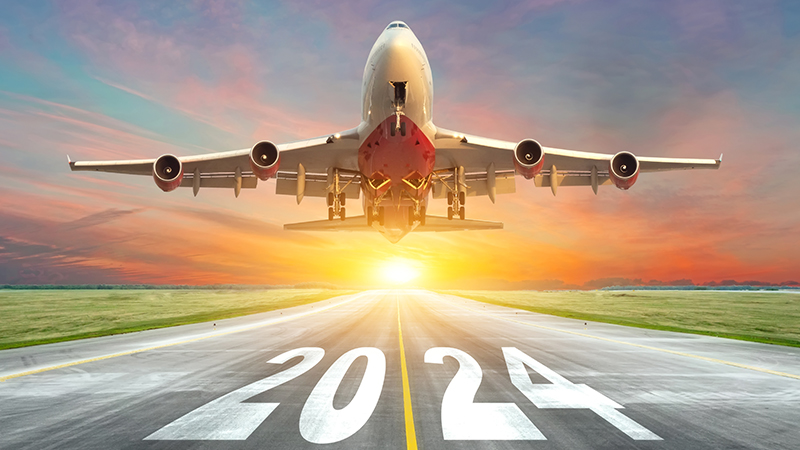

As we reach the start of 2024 it’s a good time to see how the aerospace and defence industry has changed in the past year. Overall, it’s been a good year for developments in sustainability and novel technologies, so let’s look at some of the highlights.
It would be impossible to summarise all the key developments that happened in the past year, so we’ll focus on some of the most impactful that have added value to the industry at large.
It’s been a big year for sustainability in aerospace. We’ve seen big leaps forward in alternative fuels, not least in the recent transatlantic flight by Virgin. In November 2023, it flew from London Heathrow to New York JFK on 100% SAF. This is a vital step in the wider rollout of alternative fuels, as SAF can comfortably be used in existing aircraft.
Of course, we’ve also seen advances in hydrogen and electric-powered aircraft. But these are still a while away, so SAF presents a decent stopgap to at least help the industry reduce its carbon footprint while we perfect even lower carbon fuel technologies.
3D printing isn’t exactly new, but it’s being used in novel ways in the aerospace industry. Along with changing fuel sources, improving the fuel efficiency of aircraft is just as important. Switching to 3D printing has a lot of potential for making components lighter without compromising complexity or structural integrity.
In 2023, 3D printing has gone through some important developments. Airbus announced this year that it’ll outsource 3D printing to German manufacturing company TRUMPF for aircraft parts. Considering the scale of Airbus’s operations, this is a big step for the technology. Importantly, Airbus is also investigating 3D printing cabin components as a viable way to reduce the weight of aircraft.
This year has brought us one step closer to the launch of commercial eVTOLs. As a result, we’ve seen quite a few developments across the sector. The US Military expanded its Agility Prime programme this year to include several new names and, by extension, move eVTOLs closer to FAA approval.
We’ve also seen secondary technologies and certification advance. For example, there were developments in on-board AI, air traffic management software, and even published guidance on commercial pricing structures. Considering Volocopter plans to use its eVTOLs at the 2024 Olympics, this is all necessary information for making that a reality.
So, where does this leave us in the year ahead? An obvious focus will be on eVTOLs, mainly due to Volocopter’s launch. It could prove to be a make-or-break moment, as much of the technology has so far been theoretical and demonstrative. Seeing eVTOLs in action will be a big shift for many.
Then, of course, there’s sustainability. The recent COP28 summit published guidance on moving away from fossil fuels, which will likely make this a pressing matter in the aerospace sector. This year’s developments at least mean the industry is in a good position to take things further.
Finally, we’ll likely see a bigger focus on automation and AI integration. These are buzzwords in pretty much every industry currently, and aerospace will be no different. How they’ll actually manifest in aerospace is still unclear, aside from supply chain and manufacturing developments.
In short, 2024 promises to be a year of important advancements. While we might not see anything particularly brand new, there’s plenty of potential for recent big projects to come to fruition.
